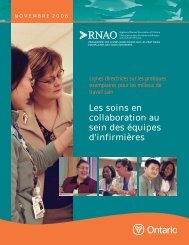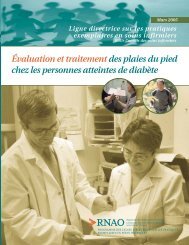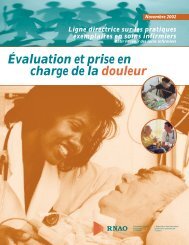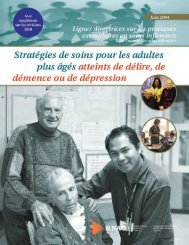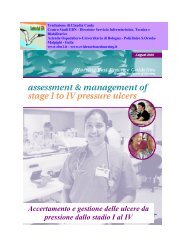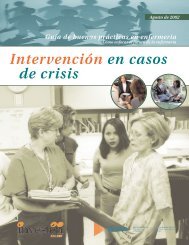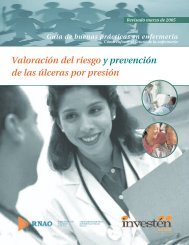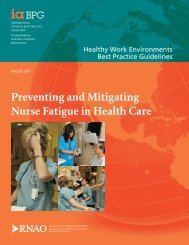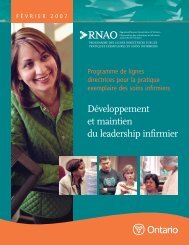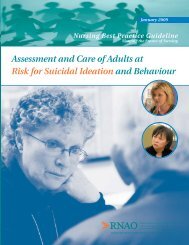Reducing Foot Complications for People with Diabetes - Registered ...
Reducing Foot Complications for People with Diabetes - Registered ...
Reducing Foot Complications for People with Diabetes - Registered ...
Create successful ePaper yourself
Turn your PDF publications into a flip-book with our unique Google optimized e-Paper software.
<strong>Reducing</strong> <strong>Foot</strong> <strong>Complications</strong> <strong>for</strong> <strong>People</strong> <strong>with</strong> <strong>Diabetes</strong><br />
28<br />
arteries, calcification of vessels, and altered sensation may influence assessment findings. It<br />
has, however, been shown that absence of both pedal pulses (dorsalis pedis and posterior<br />
tibialis) may be associated <strong>with</strong> the presence of PVD. A positive history of lower limb<br />
intermittent claudication combined <strong>with</strong> non-palpable pedal pulses bilaterally increases the<br />
likelihood of identifying PVD in diabetes (Boyko et al., 1997).<br />
The ankle-brachial index (ABI), or ratio of blood pressure in the lower extremity to blood<br />
pressure in the arm, may be the best clinical measure of reduced circulation and is strongly<br />
associated <strong>with</strong> impaired lower extremity wound healing and amputation. An ABI of < 0.8 has<br />
been reported to be up to 95% sensitive and 100% specific in detecting PVD (Boyko et al., 1999).<br />
Findings can be confounded by the presence of arterial calcification.<br />
Since measurement of ABI is not a part of usual clinical practice <strong>for</strong> most nurses, and the outcome<br />
of this assessment by individuals <strong>with</strong> varying experience will differ significantly, it has not been<br />
included as a routine assessment technique in this guideline. Appropriately trained and<br />
experienced nurses may, however, wish to include it as part of their assessment of foot ulcer risk.<br />
Self-care behaviour and knowledge<br />
There is evidence to support the value of assessing the self-care behaviour and knowledge of<br />
people <strong>with</strong> diabetes. Evidence points to greater problems, such as “3.2 increased risk of<br />
amputation” (Mason et al.,1999b, p. 802) where there is lack of foot care and foot care knowledge.<br />
On the other hand, foot care education is linked <strong>with</strong> increased foot care knowledge, foot care<br />
behaviours (CDA, 1998; Hutchinson et al., 2000; NZGG, 2000; Valk et al., 2002) and reduced amputation<br />
risk (Reiber, Pecoraro & Koepsell, 1992).<br />
Refer to Appendix C <strong>for</strong> an example of a Risk Assessment Algorithm.



